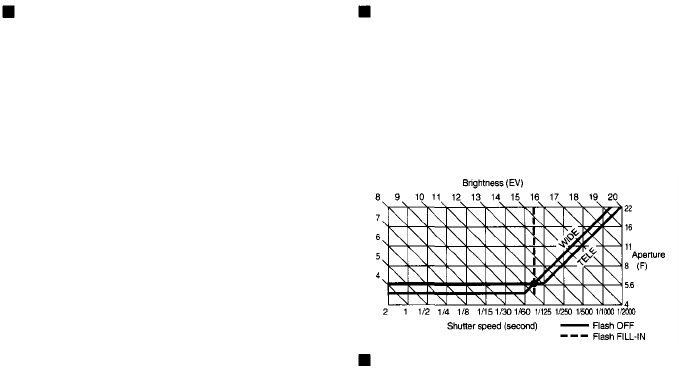
EXPOSURE
Automatic Exposure Mode
Exposure refers to the amount of light which strikes
the film, and is controlled by a combination of
aperture size and shutter speed. The correct
amount of light, called correct exposure, depends
on the film speed (indicated on the film package,
e.g.
ISO 100 or ISO
200).
The automatic exposure function automatically sets
the correct exposure. This camera employs two
types of automatic exposure modes: programmed
auto-exposure and aperture-preferred auto-
exposure.
With programmed auto exposure, the camera
automatically selects the most suitable combination
of F stop and shutter speed for the existing lighting
conditions. This lets you concentrate on composing
your shot and releasing the shutter at just the right
time.
With aperture-preferred auto, you select the desired
F stop, and the camera automatically selects the
correct shutter speed. Aperture-preferred auto
gives more artistic freedom of expression and
creativity by selecting a desired F stop to control
the blur of the background.
Program Chart (FULL AUTO)
The following program chart is for 28mm wide-
angle and 110mm telephoto focal lengths.
According to the focal length, the camera's program
i
tself changes. When the subject is brightly lit, the F
stop and shutter speed change simultaneously.
When the lighting is darker, the aperture opens fully
and the shutter speed changes to match it.
In the standard shooting mode (refer to p.36), if the
built-in flash has been flipped up, it will
automatically fire in dark lighting conditions. The
shutter speed will be fixed at 1/100-sec.
Portrait Mode
In this mode, the camera chooses a wide aperture
for a shallow depth of field. This results in a softly
blurred subject background, against which your
subject stands out in sharp focus. This mode also
prevents camera-shake from happening because a
faster shutter speed is selected.
45


















